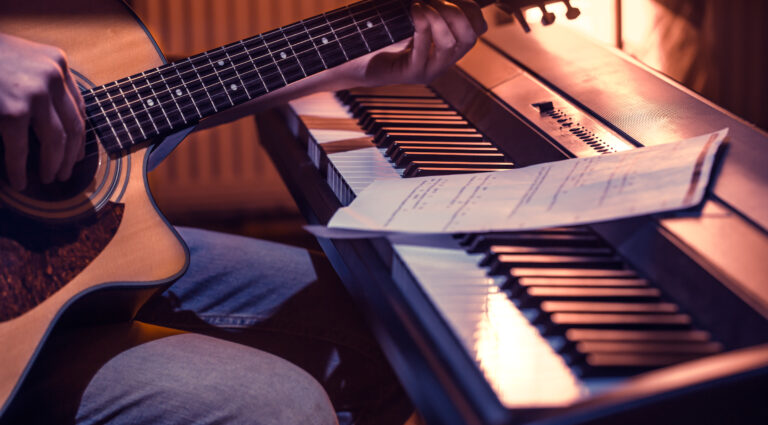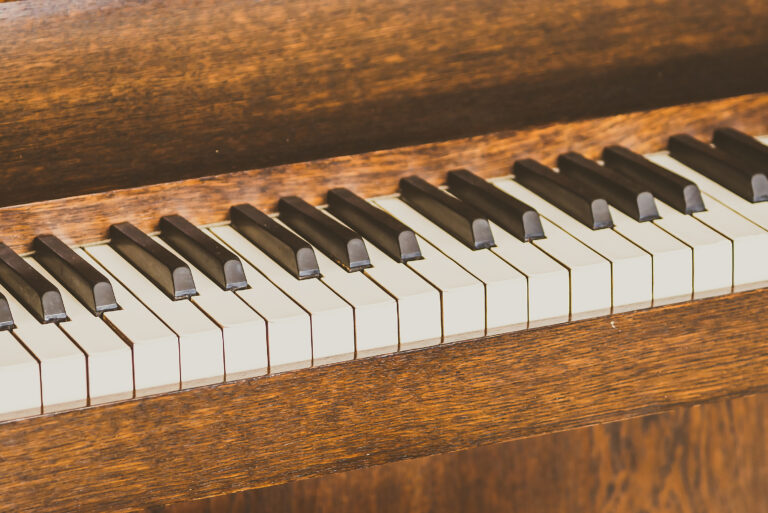Are You Hurting Your Dog’s Ears With Your Piano Playing?
As a piano player and a pet owner, have you ever wondered whether your musical hobby could be harming your furry friend’s sensitive ears? While the answer isn’t simple, it’s an important question to consider for the health and well-being of your pet.
To understand whether piano playing can harm a dog’s ears, we first need to delve into the fascinating world of the canine auditory system. Dogs have a much wider hearing range than humans, with the ability to detect sounds at much higher frequencies. They can hear sounds up to 65,000 Hz, while humans can only hear up to 20,000 Hz. Additionally, dogs have more ear muscles than humans, allowing them to move their ears in different directions to better locate sounds.
When it comes to piano playing, the frequencies produced by the instrument can potentially harm a dog’s ears if they are too loud or high-pitched. However, the impact on a dog’s hearing depends on several factors, such as the volume of the piano, the distance between the dog and the instrument, and the duration of exposure.
So, if you’re a pet owner who loves to play the piano, it’s important to consider the potential impact on your furry friend’s hearing. In this article, we’ll explore the complex relationship between piano playing and dogs’ ears, and provide tips on how to keep your pet safe while enjoying your musical hobby. By the end, you’ll have a better understanding of how to balance your love for music with your love for your pet.
The Canine Auditory System
Dogs have a highly developed sense of hearing, which allows them to detect sounds that humans cannot perceive. Their ears are capable of detecting frequencies ranging from 67 Hz to 45 kHz, which is significantly higher than the human range of 20 Hz to 20 kHz.
The canine auditory system is composed of three parts: the outer ear, middle ear, and inner ear. The outer ear is responsible for collecting sound waves and directing them towards the middle ear. The middle ear consists of the eardrum and three small bones, which amplify the sound waves and transmit them to the inner ear. The inner ear contains the cochlea, which is responsible for converting sound waves into electrical impulses that are sent to the brain for processing.
Dogs are capable of hearing sounds at much lower volumes than humans. They can detect sounds as low as 5-15 dB, while humans can only hear sounds at 20 dB or higher. This means that sounds that seem quiet to humans, such as the rustling of leaves or the hum of an electrical appliance, can be quite loud and disturbing to dogs.
It is important to note that dogs can experience discomfort and even pain from loud or high-pitched sounds. Prolonged exposure to loud noises can also lead to hearing damage and loss. Therefore, it is important for pet owners to be mindful of the sounds in their environment and take steps to protect their dog’s hearing when necessary.
Understanding Piano Frequencies
Piano playing is a popular pastime for many people, but some have concerns about whether it can harm their furry friends. To better understand whether piano playing can hurt a dog’s ears, it’s important to first understand the frequencies produced by a piano.
A piano produces a wide range of frequencies, from low to high. The lowest note on a piano, A0, has a frequency of 27.5 Hz, while the highest note, C8, has a frequency of 4186 Hz. The majority of the notes played on a piano fall within the range of 27.5 Hz to 4186 Hz.
When a piano key is pressed, a hammer strikes a string, causing it to vibrate and produce sound waves. The sound waves then travel through the air and into the listener’s ears.
It’s important to note that not all frequencies are created equal. Some frequencies are more intense than others, meaning they produce a higher volume or amplitude. The intensity of a sound is measured in decibels (dB).
A normal conversation typically registers at around 60 dB, while a rock concert can reach upwards of 120 dB. The intensity of the sound produced by a piano can vary depending on a number of factors, including the force with which the keys are struck and the acoustics of the room in which it is played.
The piano’s wide range of frequencies is impressive, but it’s important to be mindful of its volume. In smaller spaces, the sound can easily bounce off walls and become amplified, leading to a less-than-ideal listening experience. So, whether you’re a beginner or an experienced pianist, remember to be mindful of your surroundings and adjust your playing accordingly to ensure the best possible sound quality.
Piano Sounds and Dog’s Hearing Threshold
Piano playing can be a source of joy for many people, but what about our furry friends? Dogs have a different hearing range than humans, and loud noises can be harmful to their ears. In this section, we will explore the sounds produced by a piano and how they affect a dog’s hearing threshold.
Sound Frequency and Amplitude
The sound produced by a piano is a combination of different frequencies and amplitudes. The frequency of a sound is measured in Hertz (Hz) and refers to the number of waves produced per second. The amplitude of a sound is measured in decibels (dB) and refers to the intensity or loudness of the sound.
Dogs can hear a wider range of frequencies than humans. While humans can hear sounds between 20 Hz and 20,000 Hz, dogs can hear sounds between 40 Hz and 60,000 Hz. However, dogs are less sensitive to low-frequency sounds than humans.
Piano Sounds and Dog’s Hearing Threshold
The sound produced by a piano can range from 25 dB to 110 dB, depending on the type of piano and how hard the keys are struck. For comparison, a normal conversation is around 60 dB, while a rock concert can be as loud as 120 dB.
According to the American Kennel Club, sounds above 85 dB can cause hearing damage in dogs. This means that certain notes or chords played on a piano can be harmful to a dog’s ears if played at a high volume.
It is important to note that not all dogs are equally sensitive to noise. Some dogs may be more tolerant of loud sounds than others. Additionally, dogs with pre-existing hearing problems may be more susceptible to hearing damage.
While playing the piano can be an enjoyable experience, it’s important to be mindful of your furry friends. Dogs, in particular, can be sensitive to loud noises and may be at risk of hearing damage if exposed to high volumes for extended periods. So, if you’re a pet owner and enjoy playing the piano, be sure to take steps to protect your dog’s hearing and ensure a safe and enjoyable musical experience for all.
Potential Impact on Dogs
When it comes to playing the piano, it is natural to wonder whether the sound produced by the instrument can be harmful to dogs. While dogs can hear sounds at higher frequencies than humans, there is no evidence to suggest that playing the piano can cause any harm to their ears.
However, it is essential to consider the volume at which the piano is played. Loud sounds can be uncomfortable for dogs and cause stress and anxiety. In extreme cases, exposure to loud sounds can even lead to hearing loss. Therefore, it is crucial to keep the volume at a reasonable level when playing the piano around dogs.
It is also important to note that some dogs may be more sensitive to sound than others. For example, dogs with anxiety or fear-related issues may be more prone to reacting negatively to loud noises. In such cases, it is best to consult a veterinarian or a professional dog trainer for advice on how to manage the situation.
In summary, playing the piano is unlikely to cause any harm to dogs’ ears as long as the volume is kept at a reasonable level. However, it is essential to be mindful of the individual dog’s sensitivity to sound and take appropriate measures to ensure their comfort and well-being.
Signs of Discomfort in Dogs
Dogs, like humans, can experience discomfort when exposed to loud or high-pitched sounds. While some dogs may enjoy listening to music, others may find it stressful or even painful. It is important for pet owners to be aware of the signs of discomfort in their dogs when playing the piano or any other musical instrument.
Here are some common signs of discomfort in dogs:
- Pacing or restlessness
- Panting or heavy breathing
- Whining or whimpering
- Shaking or trembling
- Hiding or seeking shelter
- Licking or chewing on paws
- Avoiding the area where the piano is being played
If a dog exhibits any of these signs while the piano is being played, it is important to stop playing immediately and give the dog a break. It is also important to consult with a veterinarian to rule out any underlying medical conditions that may be causing the discomfort.
While some dogs may be more sensitive to sound than others, it is important for pet owners to take steps to ensure their dog’s comfort and well-being when playing the piano or any other musical instrument.
Mitigating Potential Harm
While it is true that piano playing can cause harm to a dog’s ears, there are several ways to mitigate this risk. Below are some steps you can take to ensure that your dog is not exposed to excessive noise levels while you play the piano.
1. Create a Safe Space
One of the easiest ways to protect your dog’s ears is to create a safe space for them to retreat to while you play the piano. This could be a separate room in your house or a designated area in your living room. Make sure that this space is far enough away from the piano so that the noise levels are not too loud. You can also place sound-absorbing materials, such as rugs or curtains, in the room to help reduce the noise.
2. Use Earplugs or Headphones
Another option is to use earplugs or headphones while you play the piano. This will help reduce the amount of noise that your dog is exposed to and can help protect their ears. Make sure that the earplugs or headphones fit properly and are comfortable for your dog to wear.
3. Limit Practice Time
It is important to limit your practice time to reduce the amount of time your dog is exposed to the noise. Try to keep your practice sessions to no more than 30 minutes at a time. This will give your dog a chance to rest and recover from the noise.
4. Monitor Your Dog’s Behavior
Finally, it is important to monitor your dog’s behaviour while you play the piano. If your dog shows signs of distress, such as whining, pacing, or hiding, it may be time to take a break. Pay attention to your dog’s body language and adjust your practice sessions accordingly.
By taking these steps, you can help mitigate the potential harm that piano playing can cause to your dog’s ears. Remember, it is important to be mindful of your dog’s needs and to take steps to protect their health and well-being.
Conclusion
While playing the piano may not necessarily harm a dog’s ears, it’s important to take precautions to ensure that your furry friend is not exposed to excessive noise levels. Keeping the piano playing at a moderate volume and limiting the duration of the playing session can help prevent any potential harm. It’s also crucial to observe your dog’s behaviour and reaction to the music – if they appear uncomfortable or distressed, it may be necessary to adjust the volume or move your pet to a different room.
It’s worth noting that individual dogs may have different sensitivities to sound, so it’s important to be aware of your pet’s specific sensitivities and adjust the piano playing accordingly.
Overall, by taking proper precautions and being aware of your pet’s comfort and safety, you can enjoy playing the piano without any harm to your furry friend’s ears. So, play on and enjoy the music – just remember to keep your pet’s well-being in mind.






